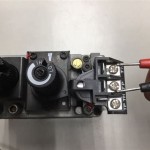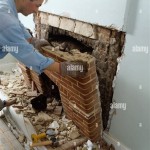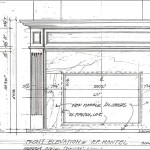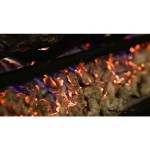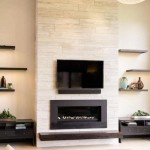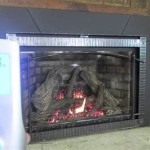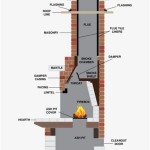Enhancing Your Home with a Propane Corner Fireplace Insert
Corner fireplaces present unique challenges and opportunities when considering heating solutions. A propane corner fireplace insert offers a compelling option for homeowners seeking efficient heating, aesthetic appeal, and ease of installation in these specialized spaces. This article explores the benefits, considerations, and technical aspects of propane corner fireplace inserts, providing a comprehensive overview of this heating appliance.
Traditional masonry fireplaces, particularly those located in corners, are often inefficient heating sources. A significant portion of the generated heat escapes through the chimney, leading to wasted energy and increased heating costs. A propane corner fireplace insert is designed to address this inefficiency by providing a sealed combustion system that maximizes heat output and minimizes heat loss. These inserts are specifically engineered to fit into the existing firebox of a corner fireplace, transforming it into a highly effective heating appliance.
Key Benefits of Propane Corner Fireplace Inserts
Propane corner fireplace inserts offer several advantages over traditional fireplaces and other heating solutions. These benefits contribute to their growing popularity among homeowners seeking efficient, aesthetically pleasing, and convenient heating options.
Enhanced Efficiency: One of the primary benefits of a propane corner fireplace insert is its superior heating efficiency. Unlike traditional fireplaces, which can lose a significant amount of heat through the chimney, propane inserts are designed to retain heat and distribute it more effectively into the room. Modern propane inserts can achieve efficiency ratings of up to 80%, meaning that a large percentage of the fuel's energy is converted into usable heat. This translates to lower heating bills and reduced energy consumption.
The efficiency of a propane insert is due to its closed combustion system. Air for combustion is drawn from outside the home, and exhaust gases are vented directly outdoors through a dedicated flue. This prevents the loss of heated room air up the chimney, which is a common problem with traditional fireplaces. Additionally, many propane inserts feature thermostatic controls, allowing homeowners to precisely regulate the temperature and maintain a consistent level of comfort.
Aesthetic Appeal and Design Versatility: Propane corner fireplace inserts are available in a wide range of styles and designs, allowing homeowners to choose an option that complements their existing décor. From traditional log sets to contemporary glass media, there are numerous customization options available to create a visually appealing focal point in the room. The realistic flame patterns and glowing embers of a propane fireplace insert can replicate the ambiance of a traditional wood-burning fireplace without the hassle of wood storage and maintenance.
Furthermore, corner fireplace inserts can be installed in a variety of corner configurations, allowing homeowners to maximize space utilization. The compact design of many inserts makes them suitable for smaller rooms, while larger models can effectively heat larger living areas. The ability to customize the appearance of the insert, including the firebox lining, surround, and decorative accessories, ensures that it seamlessly integrates into the overall design of the home.
Convenience and Ease of Use: Propane corner fireplace inserts offer a significant advantage in terms of convenience and ease of use compared to traditional wood-burning fireplaces. With a propane insert, there is no need to chop, stack, and store wood. The fireplace can be ignited with the touch of a button, and the flame height and heat output can be adjusted using a remote control or thermostat. This eliminates the labor-intensive process of tending to a fire and allows homeowners to enjoy the warmth and ambiance of a fireplace without the associated mess and effort.
Additionally, propane inserts require minimal maintenance. There is no need to clean out ashes or sweep the chimney as frequently as with a wood-burning fireplace. Regular servicing by a qualified technician is recommended to ensure optimal performance and safety, but the overall maintenance requirements are significantly lower than those of a traditional fireplace.
Installation Considerations for Propane Corner Fireplace Inserts
Proper installation is crucial for the safe and efficient operation of a propane corner fireplace insert. It is essential to engage a qualified and certified technician to ensure that the installation meets all applicable codes and regulations. Several factors must be considered during the installation process.
Fireplace Inspection and Preparation: Before installing a propane insert, the existing fireplace and chimney must be thoroughly inspected to ensure they are in good condition. The chimney should be cleaned and inspected for any cracks, damage, or obstructions. If necessary, the chimney may need to be relined or repaired to ensure proper venting. The firebox must be properly sized to accommodate the insert, and any necessary modifications should be made to ensure a secure and stable fit.
Venting Requirements: Propane fireplace inserts require a dedicated venting system to safely exhaust combustion gases outdoors. The venting system must be properly sized and installed according to the manufacturer's specifications. In most cases, a flexible stainless steel liner is installed inside the existing chimney to provide a dedicated flue for the insert. The liner must be properly connected to the insert and sealed to prevent leaks. It is essential to ensure that the venting system complies with local codes and regulations.
Propane Connection and Gas Line Installation: A propane fireplace insert requires a connection to a propane supply line. The gas line must be installed by a qualified technician in accordance with local codes and regulations. The size and type of gas line must be appropriate for the BTU rating of the insert to ensure adequate fuel supply. A shut-off valve should be installed near the insert for safety and convenience. It is crucial to perform a leak test after the gas line is connected to ensure there are no leaks.
Fuel Efficiency and Cost Analysis
Understanding the fuel efficiency and cost implications of a propane corner fireplace insert is essential for making an informed decision. While the initial investment in a propane insert may be higher than other heating options, the long-term cost savings and benefits can be significant.
Propane Consumption: The amount of propane consumed by a fireplace insert depends on several factors, including the size of the insert, the BTU rating, the efficiency rating, and the frequency of use. Larger inserts with higher BTU ratings will consume more propane than smaller, less powerful models. The efficiency rating of the insert will determine how much of the propane's energy is converted into usable heat. Homeowners can estimate their propane consumption by reviewing the manufacturer's specifications and considering their typical heating needs.
Cost Comparison: To determine the true cost of using a propane fireplace insert, it is important to compare it to other heating options, such as natural gas, electricity, and wood. The cost of propane can vary depending on location and supplier, so it is advisable to obtain quotes from multiple providers. When comparing costs, consider the efficiency ratings of each heating system, as well as the cost of installation, maintenance, and fuel. In many cases, propane fireplace inserts can offer a cost-effective heating solution, especially when compared to inefficient traditional fireplaces or electric resistance heating.
Long-Term Savings: While the initial investment in a propane corner fireplace insert may seem significant, the long-term savings can outweigh the upfront cost. The enhanced efficiency of a propane insert can result in lower heating bills, reduced energy consumption, and increased comfort. Additionally, the convenience and ease of use of a propane insert can save time and effort compared to managing a wood-burning fireplace. Over time, these savings can add up to a substantial return on investment.
Safety Features and Considerations
Safety is paramount when operating any heating appliance, including propane corner fireplace inserts. These inserts are equipped with several safety features to ensure safe and reliable operation. It is important to understand these features and adhere to all safety guidelines to prevent accidents and ensure the well-being of occupants.
Oxygen Depletion Sensor (ODS): Most propane fireplace inserts are equipped with an oxygen depletion sensor (ODS). This safety device monitors the oxygen levels in the room and automatically shuts off the gas supply if the oxygen level drops below a safe threshold. This prevents carbon monoxide poisoning, which can occur if the fireplace is not properly vented or if there is insufficient ventilation in the room.
Automatic Shut-Off Valves: Propane inserts are typically equipped with automatic shut-off valves that will shut off the gas supply in the event of a malfunction or safety issue. These valves are designed to prevent gas leaks and potential explosions. It is important to regularly inspect these valves to ensure they are functioning properly.
Carbon Monoxide Detectors: To provide an additional layer of safety, it is recommended to install carbon monoxide detectors in the home, especially near the fireplace. Carbon monoxide is a colorless, odorless gas that can be deadly. Carbon monoxide detectors will alert occupants to the presence of carbon monoxide, allowing them to evacuate the home and seek medical attention if necessary.
Regular Maintenance and Inspections: Regular maintenance and inspections by a qualified technician are essential for ensuring the safe and reliable operation of a propane corner fireplace insert. The technician can inspect the venting system, gas line, and safety features to identify any potential problems and make necessary repairs. It is also important to follow the manufacturer's recommendations for maintenance and cleaning.
By adhering to these safety guidelines and ensuring proper installation and maintenance, homeowners can enjoy the warmth and ambiance of a propane corner fireplace insert with peace of mind.

Lx2 Corner Gas Fireplace Left Propane The Center

Vantage Hearth Direct Vent Gas Corner Fireplace

Vantage Hearth B Vent Gas Corner Fireplace

Corner Ventless Gas Fireplace Visualhunt

Chicago Corner 40re Designer Gas Fireplace Regency
Corner Two Sided Gas Fireplace Heat Glo

Corner Series Direct Vent Gas Fireplace By Majestic S Fireplaces

Lx2 Corner Gas Fireplace Left Propane The Center

Empire Corner Cabinet Mantel With Base For Vfd26fp Fireplaces

Corner Ventless Gas Fireplace Visualhunt

